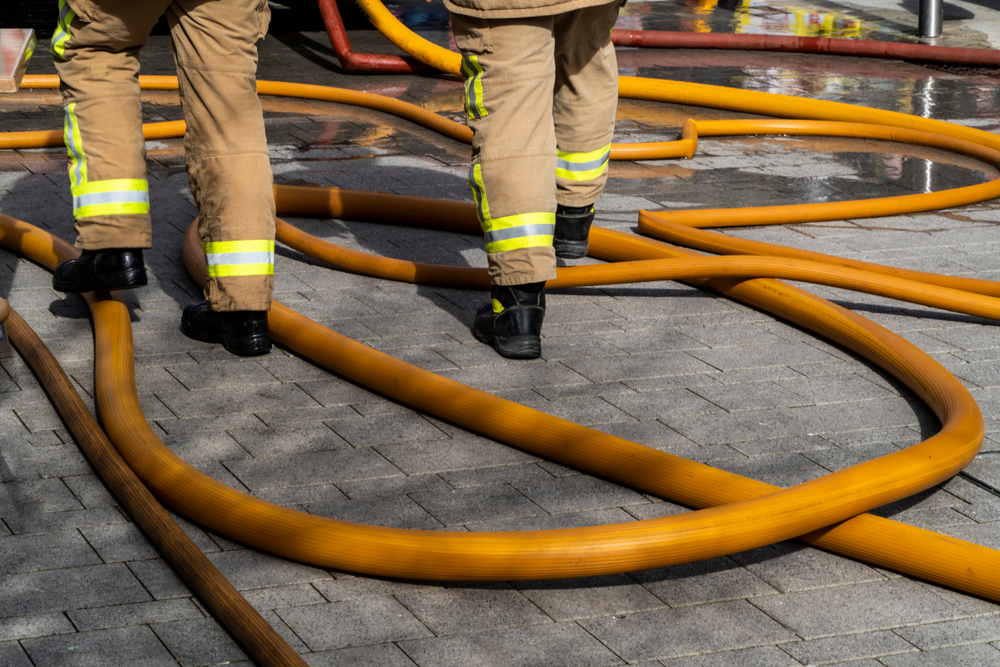High volume pumping incidents – which garments are best?
- November 9, 2020
- 10:53 am


Iain Hoey
Share this content
Whilst high volume pumping (HVP) incidents aren’t the most common call out for firefighters, they still require specialist support from brigades. So, what conditions do firefighters face on these types of jobs? And what garments are best for firefighters to wear to handle these conditions?
Reece Buchner, technical sales manager at FlamePro, a British specialist manufacturer of life-saving garments for firefighters, details everything you need to know about HVP incidents and which garments should be worn on the job in his guest blog for Fire Product Search.
What conditions do firefighters face at High volume pumping incidents?
More often than not, HVP will be used during a flooding accident. Whether this is caused by a river bursting its banks or high volumes of rain overwhelming roadside drainage systems, they usually involve firefighters spending hours wading around in inches or even a few feet of water.
High volume pumps can also be utilised when a significant amount of water needs to be moved quickly – such as the incident at Whaley Bridge in Derbyshire last year, where the reservoir dam wall threatened to collapse due to heavy rainfall. Several HVPs were deployed, as 150 firefighters battled to remove 70,000 litres of water a minute from the reservoir.
What is the best PPE for HVP incidents?
HVP incidents are unique in the sense that firefighters do not need protection from extreme heat and flames, unlike the majority of other call-outs. However, it is still important that firefighters can be easily identified on these jobs, given the number of emergency services that will likely be present.
It is important to note that HVP operatives are different to those that will be wearing dry suits in deeper water; the HVP is usually situated on dry ground, but the prevailing conditions are wet and the work is active, meaning lightweight, waterproof garments are the order of the day.
Therefore, the best type of kit for these jobs is a single-layer, waterproof and lightweight suit, to allow firefighters to move around easily and comfortably. Ensuring the kit is waterproof is essential as standard turn-out gear will become soggy and heavy from rainfall, compromising a firefighter’s mobility.
The lightweight nature of the garments is also essential, due to the physical nature of these jobs; manning pumps, unrolling kilometres of hoses and packing everything away once the job is complete.
The conditions also mean that waterproof and rubber boots are a must, given the high volumes of water firefighters are required to trudge through. Boots used in a standard turn out kit are often described as ‘waterproof’, but, these are designed only to resist splashes when tackling fire with hoses. Therefore, having rubber boots ensures firefighters will still have dry feet at the end of the job.
Whilst HVP incidents are far from the most common call out, as the colder and wetter months now approach, it is more and more likely fire brigades will be involved in such an incident. That’s why it is essential that firefighters are prepared and equipped with the right PPE now, for whenever an incident may arise.



